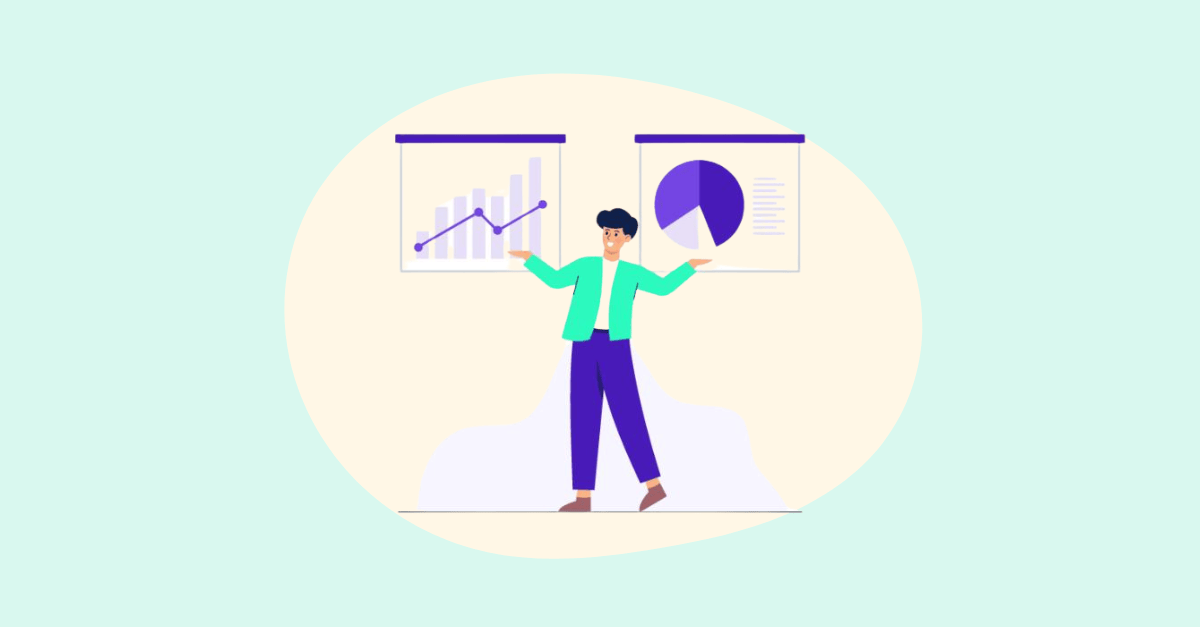Time series forecasting models: Predicting future business trends
Discovering the power of a time series forecasting model is like unlocking a treasure chest for your business. You can instantly start forecasting...
4 min read
![]() Guest
August 22, 2024
Guest
August 22, 2024
Accurate forecasts are the holy grail of business planning. The ability to reliably predict future outcomes allows companies to strategize more effectively. When forecasting tools are integrated with the scalability of SaaS platforms, predictive analytics can be taken to exciting new levels. This creates a powerful combination that unlocks game-changing possibilities.
In this post, we’ll explore the synergies between forecasting and SaaS. We’ll look at key steps for implementation, as well as potential challenges. Most importantly, we’ll highlight the many benefits realized when these two technologies join forces. The results include boosted accuracy, expanded functionality, greater flexibility, and cost optimization.
Let’s dive in and see how this tag team enables next-generation predictive power.
 Table of contents
Table of contentsForecasting tools and SaaS platforms are natural complements. Combined, they add up to
something greater than the sum of their parts.
SaaS provides expansive scalability along with robust processing power. This cloud-based
foundation allows forecasting tools to maximize their capabilities. SaaS offers a flexible
architecture for capturing, managing, and crunching huge datasets.
In turn, integrated AI and machine learning enrich analysis and models. Self-learning algorithms detect hidden patterns and correlations. That reduces reliance on assumptions and improves predictive accuracy.
For example, time series analysis tools can churn through terabytes of historical data hosted in the cloud. Machine learning algorithms discern subtle trends and cycles. It reveals insights that would otherwise be invisible to human analysts.
Together, SaaS platforms and forecasting tools unlock enhanced analytics. Scalability enables complex computations using vast datasets. AI uncovers obscure relationships and patterns. The synergy empowers businesses to see farther into the future with greater clarity.
Reaping the benefits of this winning combination involves thoughtful implementation. Here are key steps for onboarding forecasting tools within a SaaS environment:
First, closely evaluate current processes and pain points. Identify gaps where improved
analytics and forecasting capabilities can drive greater efficiency and insight. Develop clear
objectives that new solutions must address.
For example, metrics may indicate that existing demand planning tools lack sufficient
granularity. Enhanced seasonal forecasting functionality could reduce inventory costs and
stockouts.
Take stock of existing data infrastructure and interfaces. Catalog transactional systems, data warehouses, APIs, dashboards, and other resources.
This establishes connectivity requirements for deploying new analytics tools. It also highlights areas where data standardization or consolidation may be needed.
With goals and infrastructure mapped out, the next step is matching tools to requirements.
Leading SaaS forecasting platforms offer modules for financial modeling, demand planning,
predictive maintenance, and more.
Prioritize must-have capabilities based on pain points and objectives. Also, consider
opportunities to layer tools over time for added functionality.
SaaS allows tools to flex with data demands. Scalable cloud infrastructure provides frictionless expansion and abundant computing power. Consider starting with smaller datasets to establish validity. Then, ramp up data flows to inform complex models and algorithms.
Integrated tools should feed key datasets into forecasting engines automatically. API integration eliminates manual number crunching. Automated data flows enable continuous optimization. Models stay up to date without ongoing human intervention.
Monitor adoption, efficiency gains, and forecast accuracy. Tweak processes, data flows, and
configurations, adding complementary tools to enrich insights.
Regular evaluation ensures maximum value is derived from investments in new capabilities.
While the forecasting/SaaS combo delivers potent results, integrating these technologies also poses some challenges:
Proactive planning and governance will smooth the path to integration. However, organizations should anticipate and prepare to navigate such challenges. The benefits make it well worth the effort.
The payoff for tackling implementation hurdles is game-changing. Consider these exceptional benefits:
By integrating predictive analytics tools with cloud software platforms, companies can
significantly improve forecasting accuracy. How? Sophisticated machine learning algorithms can continuously analyze massive volumes of historical data, detecting subtle patterns humans would likely miss. This impartial, data-driven number crunching leads to extremely precise forecasts.
Unlike biased human predictions, algorithms objectively examine data to calculate probabilities. By removing subjectivity, we can produce revenue, demand, and other forecasts that are spot-on.
These solutions easily connect multiple internal and external data sources into one centralized platform. Blending all that varied data provides a comprehensive 360-degree business view. APIs also allow teams to embed forecasts directly into existing technical systems across the organization.
Everyone can then access the same truthful forecasts to inform decisions company-wide. And with data seamlessly flowing across tools, organizations gain an integrated predictive
intelligence layer to optimize key workflows - from supply chain to budgeting and more.
One major advantage of cloud-based software is flexibility. Capacity for additional data, users, and tools can scale up on demand in just minutes. This makes adjusting to evolving business needs simple and fast vs. clunky on-premise servers.
These platforms also use modular architectures that make integrating new capabilities affordable and quick. So, companies can readily layer on more data science as market dynamics shift or strategic priorities change over time. When adopting SaaS solutions, properly calculating metrics like annual recurring revenue (ARR) is key for accurately forecasting and budgeting over longer time horizons.
By tightly controlling ARR projections, finance teams gain an authoritative guide for targeting growth, resource allocation, and operational planning.
Because solutions are hosted in the cloud, there’s no need for major hardware investments with SaaS. Pricing is typically structured as predictable annual contracts to control costs over time. Consolidating all tools into one platform also streamlines expenses.
There are innate economies of scale with cloud tools as well. Maintenance, upgrades, overhead - all of that is vastly reduced compared to on-premise options. Across the entire lifecycle, SaaS delivers unmatched value.
The meteoric rise of SaaS makes on-premise software look like a thing of the past. Integrating leading-edge forecasting tools with cloud platforms unleashes predictive analytics in an entirely new way. Yes, implementation brings challenges. But persevering pays off exponentially.
With SaaS scalability turbocharging forecasting algorithms, businesses gain unprecedented visibility into the future. Models sharpen, bias fades, and optimization never stops. And as the cloud expands, so do the insights.
The forecast is clear – together, these technologies will fundamentally transform planning. And leaders prepared to enable that future will steal a march on the competition.
Get notified about new events, free resources, and fresh content

Discovering the power of a time series forecasting model is like unlocking a treasure chest for your business. You can instantly start forecasting...

A financial model can help you build trust with investors, improve the efficiency of your operations, and unlock valuable insights about your...

Diving into financial modeling prep is like unlocking a secret code that can predict the future of businesses and investments. It's essential, yet...